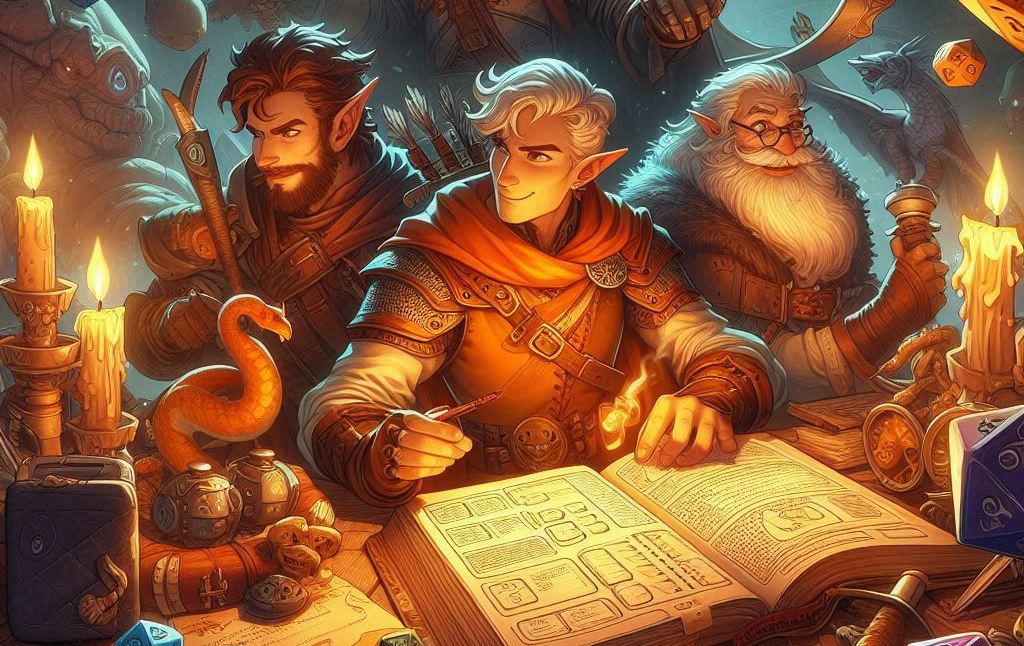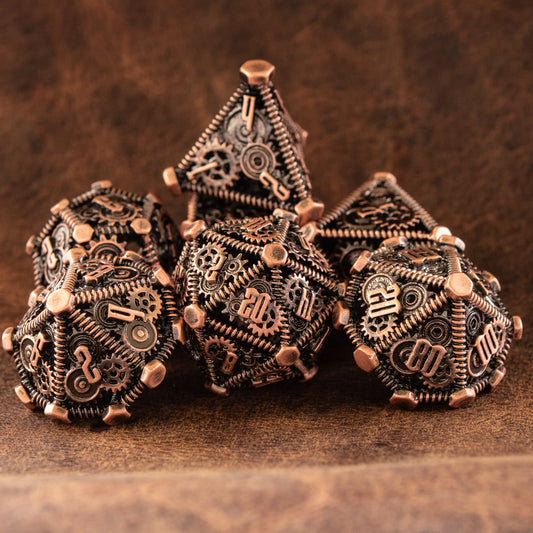Introduction to Dungeons & Dragons Dice and Character Creation
Dungeons & Dragons (DND) is a legendary tabletop role-playing game that has captivated players for decades. Central to the game’s mechanics is the process of character creation, which involves a combination of creativity, strategy, and luck. One of the most crucial aspects of this process is the use of dice, known as polyhedral dice, which determine character attributes, combat outcomes, skill checks, and more.
In this article, we will dive deep into the mechanics of character creation in DND, particularly focusing on the role of dice rolling. From understanding the different dice types (D20, D12, D10, D8, D6, and D4) to exploring the various methods of rolling for stats, this guide will provide a thorough breakdown of how to use a DND dice roller to create a dynamic and unique character.
1. Understanding Polyhedral Dice in DND
Before delving into character creation, it's essential to understand the different types of dice used in DND. Unlike traditional games that use six-sided dice, DND employs a variety of polyhedral dice, each serving a unique purpose.
1.1 The Standard Set of Dice
A typical set of DND dice includes the following:
- D20 (20-sided dice): The most iconic dice in DND, the D20 is used for most actions, including attack rolls, saving throws, and ability checks. Its results range from 1 to 20, with a natural 20 often representing a critical success.
- D12 (12-sided dice): Less frequently used, the D12 is often employed for specific weapon damage rolls and some hit points.
- D10 (10-sided dice): The D10 is used for calculating damage and hit points, as well as percentile rolls (when combined with another D10).
- D8 (8-sided dice): A common dice for weapon damage rolls, such as long swords and other medium-damage weapons.
- D6 (6-sided dice): While the D6 may be familiar from other games, in DND it serves many roles, from weapon damage to hit dice and character abilities.
- D4 (4-sided dice): Often used for minor damage rolls, spell effects, and determining certain outcomes.
Understanding the function of these dice is critical to successful character creation, as each one will come into play depending on the class, race, and abilities you choose.
2. Character Attributes and Dice Rolling
At the heart of DND character creation lies the rolling of ability scores. These scores—Strength, Dexterity, Constitution, Intelligence, Wisdom, and Charisma—determine your character’s core abilities and influence nearly every aspect of gameplay. Dice play a key role in determining these stats.
2.1 The Six Core Attributes
- Strength: Represents physical power, affecting melee attack rolls and damage.
- Dexterity: Influences agility, reflexes, and ranged attack rolls. It also determines your Armor Class (AC).
- Constitution: Affects hit points and resistance to damage or adverse effects.
- Intelligence: Represents reasoning and knowledge, influencing spellcasting for certain classes and knowledge-based skills.
- Wisdom: Governs perception and insight, and is critical for clerics and druids.
- Charisma: Influences charm and leadership, crucial for bards, sorcerers, and warlocks.
Each of these attributes is assigned a numerical score, which is typically determined by rolling dice. Let's explore the different methods used to roll for ability scores.
3. Methods for Rolling Ability Scores
In DND, several methods can be employed to roll for your character’s ability scores, each offering different levels of randomness and player control. The most popular methods are as follows:
3.1 The Standard 4d6 Drop Lowest Method
One of the most widely used methods for generating ability scores is the "4d6, drop the lowest" method. Here’s how it works:
- Roll four six-sided dice (4d6).
- Discard the lowest die roll.
- Add the remaining three dice together to get a score.
- Repeat this process six times to generate scores for each of your attributes.
This method introduces some randomness but still allows for moderately balanced characters since rolling four dice improves the average result.
Example: You roll four D6 dice and get the numbers 3, 5, 4, and 6. You drop the lowest roll (3), and your total score becomes 5 + 4 + 6 = 15.
3.2 The Point Buy System
For players who want more control over their characters' attributes, the point buy system is an excellent alternative. In this method:
- Each player starts with a set number of points (typically 27).
- Each attribute begins at a base score (usually 8), and players spend points to increase their stats, with higher scores costing more points.
This method ensures balanced character creation, allowing players to tailor their characters precisely to the role they envision.
3.3 Standard Array
The Standard Array is a quick and balanced method for determining attributes:
- Players are given a fixed set of scores (15, 14, 13, 12, 10, 8) to assign to their six ability scores as they see fit.
- This method eliminates dice rolling entirely and ensures a fair, balanced start for every character.
4. Using Online DND Dice Rollers
With the rise of digital tools, many players now opt to use online dice rollers for character creation. These tools replicate the randomness of rolling physical dice but offer greater convenience, especially in remote or virtual games.
4.1 Popular Online DND Dice Rollers
Several online dice rollers have become popular among DND players:
- DnDBeyond Dice Roller: Integrated with character creation tools, it allows for easy stat rolling and direct assignment to character sheets.
- Roll20 Dice Roller: A versatile tool that can handle complex dice formulas and is often used in conjunction with virtual DND sessions.
- Google Dice Roller: A quick, simple tool that lets you roll any combination of dice, though it lacks DND-specific integration.
4.2 Benefits of Online Dice Rollers
- Speed and Efficiency: Rolling stats and determining outcomes is much faster with online tools, especially when rerolling or calculating averages.
- Consistency and Transparency: In group games, online rollers ensure transparency, as all players can see the rolls, preventing disputes over results.
- Customization: Many tools allow you to create custom dice rolls, perfect for unique game mechanics or homebrew rules.
5. Character Classes and Dice Rolls
Each character class in DND brings its own set of dice mechanics into play, from hit dice to spellcasting and combat rolls. Understanding how dice relate to your class is essential for creating an effective character.
5.1 Hit Dice and Class Selection
Hit dice determine a character’s hit points, and each class has a different hit dice associated with it. For example:
- Barbarian: Rolls a D12 for hit points, making them the class with the highest potential health.
- Fighter, Paladin, Ranger: Roll a D10 for hit points, balancing durability with versatility.
- Cleric, Druid, Monk, Rogue: Roll a D8 for hit points, providing moderate survivability.
- Sorcerer, Wizard: Roll a D6 for hit points, making them the most fragile classes.
When leveling up, players roll their class-specific hit dice and add their Constitution modifier to determine the additional hit points they gain.
5.2 Spellcasting and Dice Rolls
Many classes, such as wizards, sorcerers, and clerics, rely heavily on dice rolls for their spellcasting abilities. Spells often involve rolling for damage or determining success with saving throws, making understanding dice rolls critical for these classes.
For instance, a fireball spell cast by a wizard requires rolling 8d6 to determine the total damage dealt to enemies. Additionally, those caught in the blast must roll a D20 for a Dexterity saving throw to avoid or reduce the damage.
6. Race, Background, and Modifier Rolls
In addition to class, your choice of race and background can influence dice rolls and character creation.
6.1 Racial Ability Score Modifiers
Each race in DND provides specific bonuses to certain ability scores, which can greatly affect your character’s stats. For example:
- Elves: Typically gain a +2 bonus to Dexterity, making them excellent archers and nimble fighters.
- Dwarves: Often receive a +2 bonus to Constitution, making them resilient in battle.
- Half-Orcs: Gain a +2 bonus to Strength and a +1 bonus to Constitution, making them ideal for melee-focused classes like barbarians.
These racial bonuses should be considered when rolling your ability scores, as they can enhance your character’s strengths or balance out weaker stats.
6.2 Background and Skill Rolls
Your character’s background provides additional proficiency in skills, which may influence future dice rolls during gameplay. For example:
- The Acolyte background provides proficiency in Insight and Religion, which means when you roll a D20 for these skill checks, you can add your proficiency bonus to the result.
- The Criminal background grants proficiency in Deception and Stealth, critical for characters who thrive on subterfuge.
7. Skill Checks and Saving Throws
Dice rolls play a pivotal role in DND beyond character creation, as they are essential for skill checks and saving throws during gameplay. Understanding how these rolls work is critical for effectively managing your character's interactions and decisions in the game world.
7.1 Skill Checks and Ability Rolls
Whenever your character attempts to perform an action that is not automatically successful, such as persuading a merchant to lower their prices or climbing a steep cliff, the Dungeon Master (DM) will often call for a skill check or ability check. This involves rolling a D20 and adding the appropriate modifier (based on your character's attributes and proficiency).
- How It Works: The player rolls a D20 and adds any relevant modifiers (such as Dexterity for a stealth check or Charisma for a persuasion check). The DM will set a Difficulty Class (DC) for the check, which the player’s total roll must meet or exceed to succeed.
Example: If you're attempting to sneak past a guard (a Dexterity-based Stealth check) and roll a 14 on your D20, you’ll add your Dexterity modifier (e.g., +3) and any proficiency bonus if you're proficient in Stealth. If the guard's perception DC is 15, you succeed with a total roll of 17.
7.2 Proficiency Bonus and Skill Rolls
Each character gains a proficiency bonus based on their level, which they can add to certain skills, saving throws, and weapon attacks. This bonus increases as your character levels up, and it represents their increasing expertise in various areas.
- Proficiency in Skills: If you are proficient in a skill like Perception or Acrobatics, you get to add both the relevant ability modifier and your proficiency bonus to your D20 roll.
- Expertise: Some classes, such as rogues, allow characters to gain expertise in certain skills, which lets them double their proficiency bonus for certain rolls.
7.3 Contested Rolls
In some situations, two characters (or a character and a creature) may engage in a contested roll, where each party rolls a D20 and adds their respective modifiers. The higher result wins. Contested rolls come into play during actions like grappling or deception.
Example: If your character is trying to deceive a guard, you might roll a Charisma-based deception check, while the guard rolls a Wisdom-based insight check to determine if you're lying. The one with the higher total wins the contest.
8. Saving Throws: Rolling for Survival
A saving throw (often referred to simply as a “save”) is a roll made to avoid or reduce harmful effects, such as dodging a fireball spell, resisting poison, or shaking off the influence of a charm spell. Saving throws are one of the key defense mechanisms in DND and often determine whether a character survives a dangerous situation or takes massive damage.
8.1 Types of Saving Throws
Saving throws are associated with the six core ability scores:
- Strength: Resisting physical effects, like being pushed or restrained.
- Dexterity: Dodging traps, evading fireballs, or avoiding other area effects.
- Constitution: Enduring poisons, diseases, or extreme weather conditions.
- Intelligence: Resisting illusions, mind control, or other mental assaults.
- Wisdom: Resisting charms or compulsions, as well as spotting hidden dangers.
- Charisma: Defending against magical forces like banishment or fear.
Each class gains proficiency in two specific saving throws, which allows them to add their proficiency bonus to these rolls. For example, barbarians are proficient in Strength and Constitution saving throws, while wizards are proficient in Intelligence and Wisdom saves.
8.2 How Saving Throws Work
When a saving throw is required, the DM will usually set a DC that the player must meet or exceed to avoid or lessen the effect. The player rolls a D20 and adds the appropriate ability modifier (and proficiency bonus, if applicable).
Example: A rogue tries to dodge a dragon’s breath weapon, a Dexterity saving throw. The DM sets the DC at 16. The rogue rolls a D20 and adds their Dexterity modifier (+3), and because they’re proficient in Dexterity saving throws, they add their proficiency bonus (+2). With a total roll of 18, they successfully evade the blast.
8.3 Critical Failures and Successes in Saving Throws
Although many DND groups house-rule that rolling a natural 1 on a D20 results in a critical failure and a natural 20 results in a critical success for saving throws, by default, this mechanic doesn’t apply to saves. Saving throws simply rely on meeting or exceeding the DC, though many DMs add flavor to the results of a natural 1 or 20 for dramatic effect.
9. Combat Rolls and Dice Mechanics
Combat is one of the most exhilarating aspects of DND, and dice rolling is central to determining the outcome of every fight. Whether you’re attacking with a sword, casting spells, or dodging enemy strikes, dice rolls govern everything that happens in combat.
9.1 Attack Rolls
To attack an enemy, a player must make an attack roll by rolling a D20 and adding the appropriate modifier. The result is then compared to the target's Armor Class (AC). If the total result meets or exceeds the target’s AC, the attack hits. If not, the attack misses.
- Weapon Attacks: For a melee or ranged weapon attack, the player adds their proficiency bonus and the relevant ability modifier (Strength for melee attacks, Dexterity for ranged attacks) to their D20 roll.
- Spell Attacks: For spells that require attack rolls (such as fire bolt), the caster adds their spellcasting modifier (Intelligence, Wisdom, or Charisma, depending on the class) and proficiency bonus.
Example: A fighter attacks a goblin with a longsword. They roll a D20, add their Strength modifier (+3) and proficiency bonus (+2). The goblin has an AC of 14, and the fighter’s total attack roll is 17, meaning the attack hits.
9.2 Damage Rolls
When an attack hits, the player rolls the appropriate dice to determine how much damage is dealt. Each weapon or spell has a specific damage dice associated with it. For example, a longsword deals 1d8 damage, while a fireball spell deals 8d6 damage.
- Critical Hits: If a player rolls a natural 20 on their attack roll, they score a critical hit, which allows them to roll twice as many dice for damage. For example, if a rogue scores a critical hit with a dagger (1d4 damage), they roll 2d4 for the attack.
- Modifiers to Damage: In addition to rolling dice, players add relevant modifiers (such as Strength for melee attacks or Dexterity for ranged attacks) to their damage rolls.
9.3 Area of Effect Attacks
Some spells and abilities target multiple creatures within an area, such as a cone or radius. These effects often require affected creatures to make a saving throw (such as a Dexterity save against fireball) to avoid or reduce the damage. Area of effect spells like lightning bolt or cone of cold typically involve rolling multiple dice (often D6 or D8) for damage.
10. Dice Rolling Strategies for Character Creation
Creating a powerful and well-rounded character requires a blend of strategy and luck. Understanding how to maximize the results of your dice rolls during character creation can help ensure that your character thrives in the world of DND.
10.1 Choosing the Right Dice Method
As discussed earlier, there are multiple methods for rolling ability scores, each with its own advantages:
- 4d6, Drop the Lowest: This method is ideal for players who want a balance between randomness and control. By rolling four dice and dropping the lowest result, you increase the chances of higher ability scores while still embracing the randomness of dice rolling.
- Point Buy: For those who prefer total control, point buy allows you to fine-tune your character’s attributes to fit your desired role. This method eliminates the randomness of dice but requires careful planning to maximize your points.
- Standard Array: If you prefer a balanced starting point, the standard array provides a fair and even set of ability scores. While it lacks the excitement of rolling dice, it ensures that all characters are created with similar potential.
10.2 Minimizing Weaknesses and Maximizing Strengths
When rolling for ability scores, it’s important to allocate your highest rolls to the abilities that most benefit your character’s class. For example:
- Fighters and Barbarians should prioritize Strength and Constitution for high melee damage and durability.
- Wizards and Sorcerers should focus on Intelligence or Charisma, as these govern their spellcasting abilities.
- Rogues and Rangers should aim for high Dexterity, which affects their attacks, Armor Class, and stealth skills.
Allocating your lower rolls to abilities that are less critical to your class’s role can help minimize weaknesses. For instance, a fighter may not need a high Intelligence score, while a wizard can afford to have lower Strength.
10.3 Rerolling and House Rules
Many groups adopt house rules that allow players to reroll certain dice results during character creation. For example, some DMs may allow rerolls if a player rolls a particularly low set of ability scores, or if the total score modifiers are below a certain threshold.
These house rules are designed to ensure that characters are neither overpowered nor underpowered compared to the rest of the party. If your group uses such rules, be sure to discuss them with your DM before rolling.






